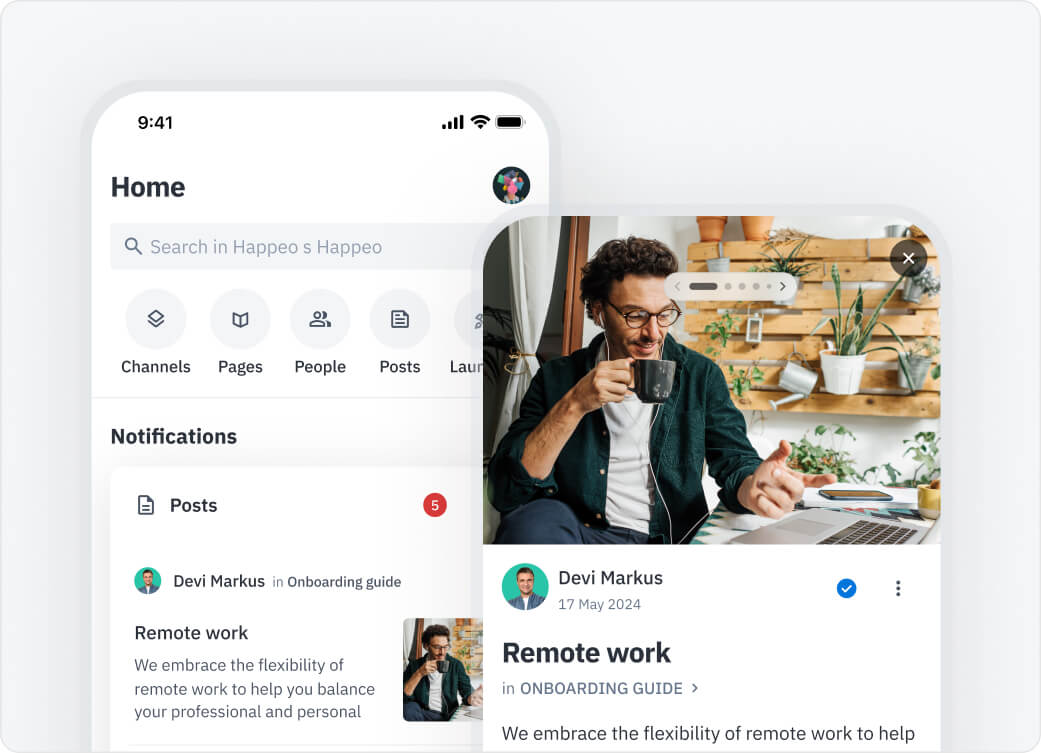
Employee engagement Expert insights
Employee Engagement and the talent turnover in high growth companies

3 mins read
Start building your digital home with Happeo
Request a demoEmployee engagement Expert insights
Product
Features
Solutions
Happeo for
Use cases
Resources
Explore
Support
Happeo For
Use cases
Comparisons
Explore
Support
Recent
Employee engagement Expert insights


Jonathan Davies
3 mins read
The word is out. If you work in a tech-driven company, chances are you’ve gotten really good at introducing yourself to unfamiliar faces.
Why? Well, out of all industries, tech companies have the highest talent turnover rate – according to LinkedIn. It’s likely driven by increasing demand and competitive-compensation offers. The research explicitly mentions professions such as UX-designers, data analysts and embedded software engineers are likely to jump ship when a better offer arrives. So why does this highly-desirable talent jump ship so often? It can’t all be about the money, right?
LinkedIn did another piece of research in 2015, showcasing the top reasons that employees leave a company. The top 6 reasons are:
The above list echoes one statement unequivocally: whether we talk about retaining or attracting talent, you can compete with the big boys even if you can’t pay like a big boy. Ping-pong tables then?
“There needs to be a combination of clear learning opportunity, personal ownership and transparency in roadmap and goals to keep up motivation of tech-minded individuals. We have lost talented people because they were spoonfed on a need-to-know basis to keep them focussed. If you can’t share the vision together, you can’t really celebrate together.”
Dan Williams, Senior UX-Designer and Product Manager
He brings up an interesting point about managing expectations from both sides. Good and clear communication around critical matters such as the product roadmap prevent confusion or worse, disappointment.
“Employees don’t fit the box we call job titles. A developer can do much more than crunch out code, and allowing them to do more can make them much happier than confining them to what you think fits their profile. At our company, one of our front-end developers also has the ‘handyman’ role, so he fixes stuff in the office when needed. Another developer helps people become ‘keyboard ninjas’ by teaching them all kinds of keyboard shortcuts. There’s always more talent in someone than you can see – you just need to listen, not look.”
Ruben Timmerman, CEO and founder of Springest
He touches on the sore spot of many Internal Communications professionals within a company. As communicators, we’ve gotten so good at getting the message out, that sometimes we forget to just listen.
Listen, coach and approach
We’re not always the Subject Matter Expert (SME) on everything our organization deals with – so too in tech. But we should know a happy employee from a frustrated one, provided that we can hear their voice. This is especially challenging in tech companies, where remote working aligns well with the nature of coding. Regardless, if we’re not the SME on matters like the product roadmap, we need to find who is and coach them into communicating better.We’ll leave you with a quote from a well-known Internal Communications consultant:
“I've conducted internal communications audits across Small-to-Medium Enterprises, large corporations and not for profits, and a common issue across them all is line management. Often, people are promoted on their technical ability and not their people skills, so they simply aren't equipped to communicate effectively with their teams. We know that people want to hear information from their line managers so it's a crucial area to get right. The challenge we face is that the solution isn't completely within the remit of Internal Communications or Employee Engagement. We need to work closely with our HR colleagues to ensure communication is an essential component of the line-management role and that full communication training is provided.”
Helen Deverell, Director of Helen Deverell Communications
